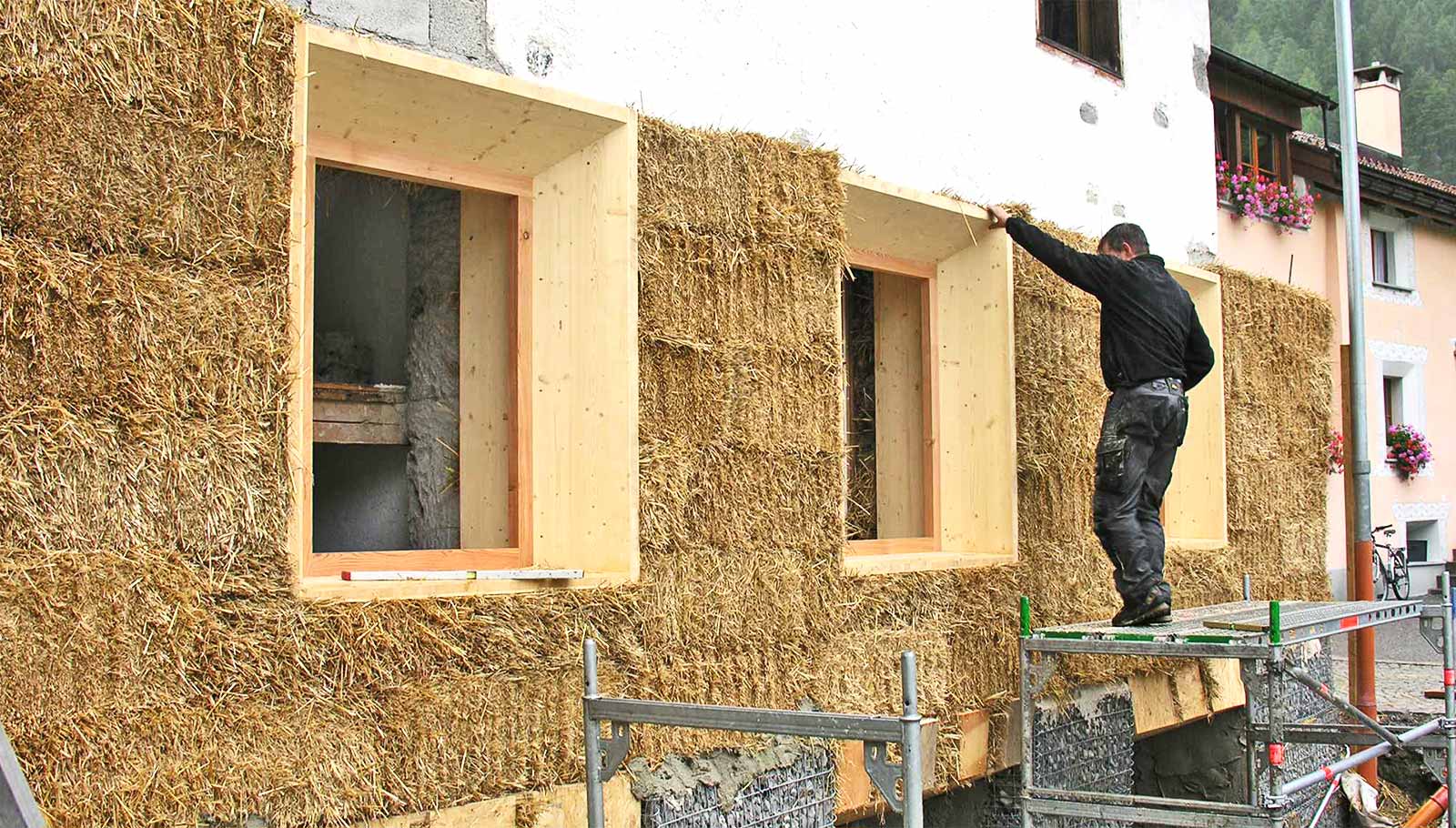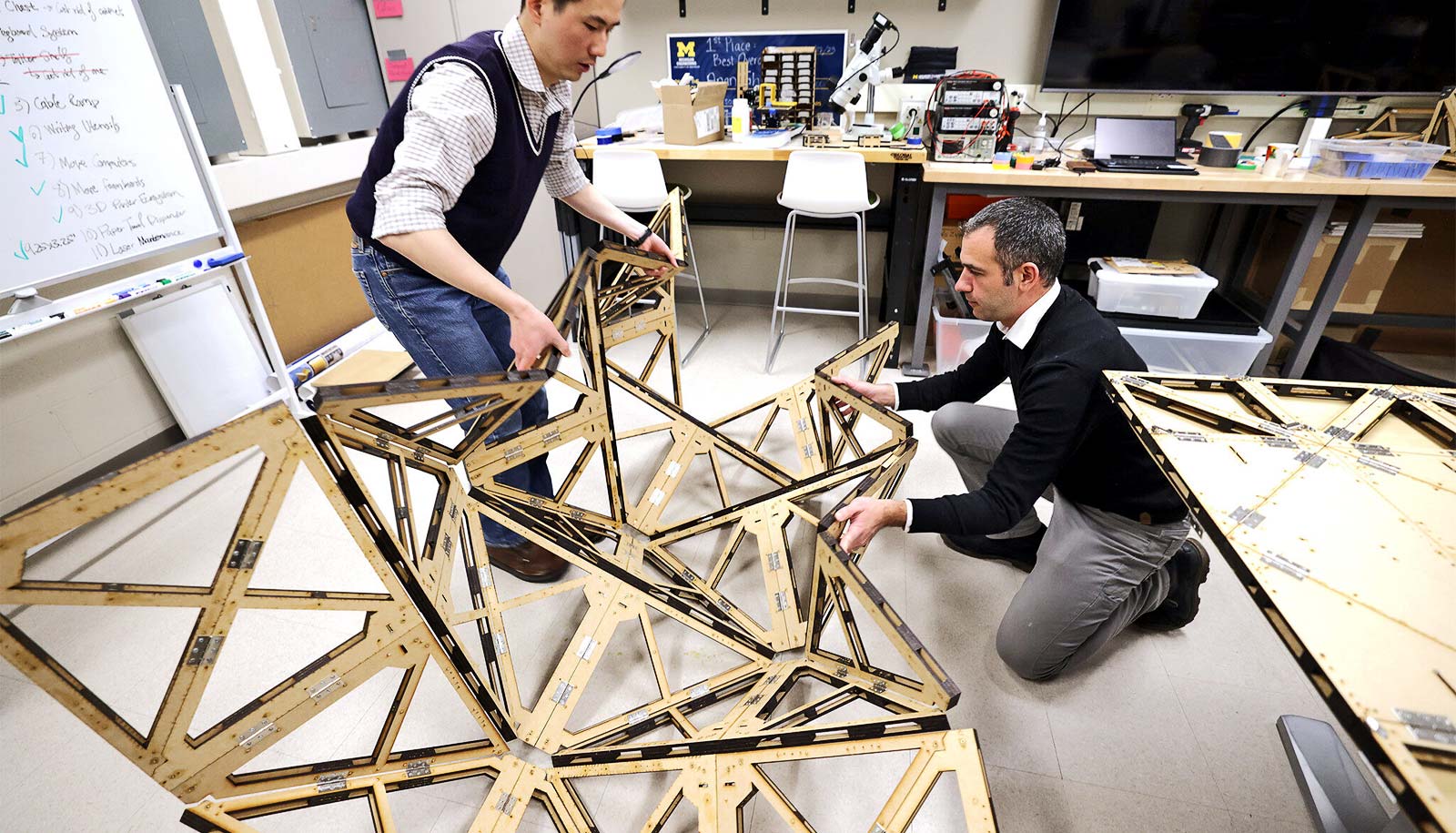Computer models of tobermorite, a key element in the superior concrete Romans used in ancient times, suggest how to make modern concrete that’s less likely to crack under stress.
Researchers performed an atom-level computer analysis of tobermorite, a naturally occurring crystalline analog to the calcium-silicate-hydrate (C-S-H) that makes up cement, which in turn holds concrete together.
Their results appear this week in the journal ACS Applied Materials and Interfaces.
Tobermorite forms in layers, like paper stacks that solidify into particles. These particles often have screw dislocations, shear defects that help relieve stress by allowing the layers to slide past each other. Alternately, they can allow the layers to slip only a little before the jagged defects lock them into place.

The researchers built the first computer models of tobermorite “super cells” with dislocations either perpendicular to or in parallel with layers in the material, and then applied shear force. They found that defect-free tobermorite deformed easily as water molecules caught between layers helped them glide past each other.
But in particles with screw defects, the layers only glided so far before being locked into place by the tooth-like core dislocations. That effectively passed the buck to the next layer, which glided until caught, and so on, relieving the stress without cracking.
Defects aren’t a weakness
This “step-wise defect-induced gliding” around the particle’s core makes it more ductile and able to adjust to stress, says Rouzbeh Shahsavari, an assistant professor of civil and environmental engineering and materials science and nanoengineering at Rice University.
“The insight we get from this study is that unlike the common intuition that defects are detrimental for materials, when it comes to complex layered crystalline systems such as tobermorite, this is not the case,” says Shahsavari. “Rather, the defects can lead to dislocation jogs in certain orientations, which acts as a bottleneck for gliding, thus increasing the yield stress and toughness.
Nanocrystals can toughen up concrete
“These latter properties are key to design concrete materials, which are concurrently strong and tough, two engineering features that are highly desired in several applications.
“Our study provides the first report on how to leverage seemingly weak attributes—the defects—in cement and turn them to highly desired properties, high strength and toughness.”
Shahsavari says he hopes the work will provide design guidelines for developing stronger, tougher concrete and other complex materials.
Postdoctoral researcher Ning Zhang is lead author of the paper and Philippe Carrez, a professor at the Lille University of Science and Technology, Villeneuve d’Ascq, France, is a coauthor.
The National Science Foundation supported the research.
Source: Rice University



